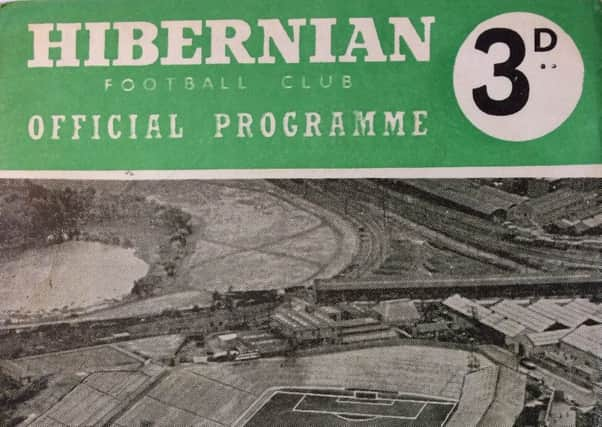Aidan Smith: Mystique of football programmes will never fade


Do you still stop and buy one at a game? Possibly not. Programmes ain’t what they used to be. They’re bigger and glossier now but more expensive and less vital to the matchday experience. In England, clubs are about to vote on being allowed to stop publishing them. In Scotland there’s no such mandatory rule that they must be provided, far less that bunneted, bandy-legged fellows with Woodbines stuck to their bottom lips must drum up business thus: “Fish-ul programmes!”
There he goes, being all nostalgic and sentimental again. Deal with it, friends, I love programmes. To complete my collection – every domestic match featuring my club during the 1960s and 1970s, not the European ones which can sell for thousands – I need 11 of these precious pamphlets. Eleven programmes, 11 “Rosebuds”. Rosebud was the name of the child’s sledge in Citizen Kane, subject of the great quest in the greatest movie ever made. Am I overplaying the importance of programmes? Let’s ask Brian Johnson…
Advertisement
Hide AdAdvertisement
Hide Ad“Programmes are still a record of games played, an expression of the clubs and their personalities, and it would be tragic if they weren’t around anymore,” he says. Johnson is speaking as a collector and a businessman – he runs Almondvale Programmes, the treasure trove a goal-kick from Hibernian’s Easter Road. “Look at Cowdenbeath: they’re currently propping up the whole of the SPFL and yet Andy Mullen and Davie Allan, the editors, produce a wonderful, glossy 48-page programme which is probably my best-seller among fans of other teams. That’s personality.
“The Edinburgh City programme is also excellent and Clyde have eight absolute diehard supporters writing theirs for free and doing a great job.” There’s a feature currently running in the Bully Wee’s publication which tells the history of the club through various pieces of memorabilia. Where did the inspiration for that come from? Maybe the British Museum’s A History of the World in 100 Objects. In many cases clubs are doing quietly heroic jobs to fill the pages since the steady erosion of the programme’s main functions.
In the old days you needed one to check the half-times around the country. Now mobile phones provide you with regular updates – no need to wait for the solemn ceremony of the man with a hessian bag containing giant numbers and letters trudging round the pitch to his scoreboard. In the old days the manager’s address carried heft and exclusivity. Now he divulges his innermost thoughts to all media outlets in advance of games (the great tart).
Programmes could not halt the march of modernity but some haven’t helped themselves by filling up with rubbish – the same lists of player sponsors every issue, the unchanging page instructing you how to behave during matches, possibly the most futile, fatuous and least-read guidelines ever committed to print. Rather effortlessly, fans decided that £3 was too much for a programme, but some clubs are now trying to halt the indifference – a problem for the printed word in all its forms – with flashback features and old player interviews, proving that your correspondent isn’t the only nostalgist out there.
Johnston believes that the programme will survive in Scotland. “Ross County haven’t produced one this season and neither have Livingston, while Queen’s Park put theirs online a few years ago,” he says.
“But Celtic and Rangers will keep publishing them and so will Hibs who’ve improved theirs in line with Hearts. I’m sure Aberdeen will continue to deliver the best one around and lots of the smaller clubs will carry on telling the world who they are through their programmes.”
If they don’t, that will only enhance the musty mystique of the parchments lining the walls of Johnston’s fantastic shop and those of his Kilmarnock-based rival, D&D Programmes. And increase the value, perhaps, which is bad news for collectors still searching for 11 Rosebuds. It’s actually 12 if I’m being fussy as a recently-obtained Ayr United issue from 1961 has “33” cryptically typed in the right-hand corner and I like my programmes to be blemish-free.
“You’re perverse,” laughs Johnson, but I know from hanging around his shop, having told the Sports Editor I’m involved in busy research, that there are bigger perverts out there. Don’t worry, guys, your secrets are safe with me, although if you could see your way to part with the programme from Dundee’s 1962 championship season that I need, or even better, the one from Third Lanark’s last-ever top-flight campaign…